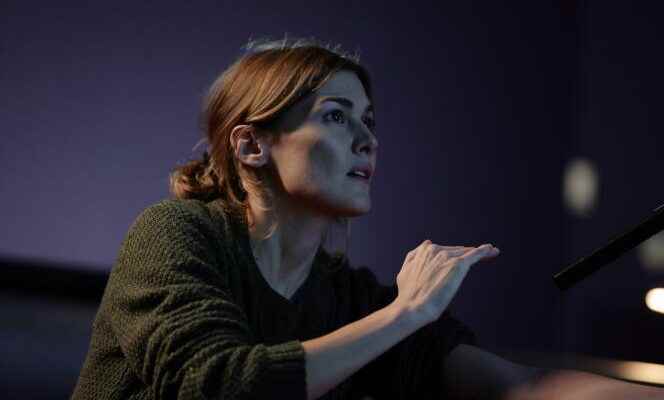THE OPINION OF THE “WORLD” – TO SEE
There was a time not so long ago when films intended for the general public could mobilize major theoretical questions of cinema, and we remember, for example, how American comedy an endless day (1993), by Harold Ramis, handled editing and rehearsals to deliver a whole existential reflection (the film comes out on August 10 in a restored print). Thus, under the deceptive appearance of a lambda product drowned in the depths of summer, Offset, first feature film by Spanish producer Juanjo Giménez and a notable surprise, carries out a similar operation concerning the fundamental link that unites, on screen, image and sound, disturbing their too obvious synchronicity.
This ordinary synchronicity, the film begins by designating it as fabrication, a work that is not at all self-evident. Her heroine, soberly called “C.” (Marta Nieto, already seen in Madre, by Rodrigo Sorogoyen), exercises the profession of sound artist and sound engineer, constructing from scratch, with the help of accessories, the sound depth of a criminal fiction (the good punch, the good sound of footsteps in dead leaves).
The young woman is going through a personal crisis. Not fully recovered from a breakup, she lost her accommodation (for which she sometimes spends nights in the studio) and, to top it off, following synchro errors observed on her recent productions, soon finds herself without use. She then discovers that she is suffering from an unprecedented physiological disorder: the sounds reach her with a shift, at first imperceptible, of a few fractions of a second, then more and more pronounced, until a gaping abyss is dug in the heart of reality. , preventing any hold on things. C. is, in a way, “out of sync”: the thread of her life escapes her.
Metaphor
Based on this principle, Offset has the good inspiration to assume it to the end, inventing scene after scene all kinds of games – dissonances, ruptures, upsurges, deferred revelations – between images and sounds, like a bouncing little B series. The discrepancy transforms reality, makes it unpredictable, incomprehensible, dangerous. C. crosses the street without hearing the car rushing at her and hitting her, even before the sound of the accident tears up the scene a second time – double surprise.
The discrepancy first occurs as the all-too-obvious metaphor of the intimate disorder of a drifting character, losing his bearings. But the film does not rest so easily on its laurels and gradually overturns the symptom to gradually reveal in it a kind of power, a sixth sense: that, as the protagonist herself states, of“hear the past of places”. Sitting at a coffee table, she can thus listen to the argument of the customers who have preceded her or, while visiting a house, hear the dramas whose walls have witnessed.
You have 20.31% of this article left to read. The following is for subscribers only.
